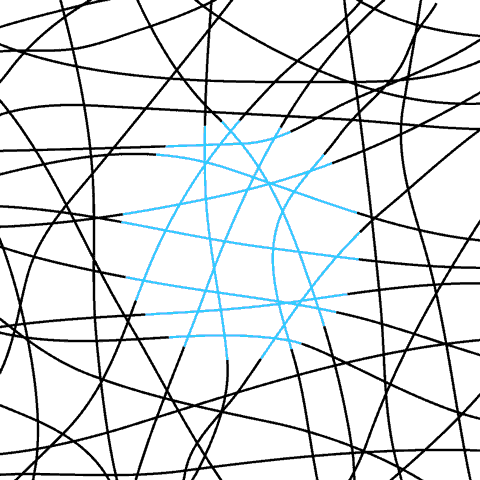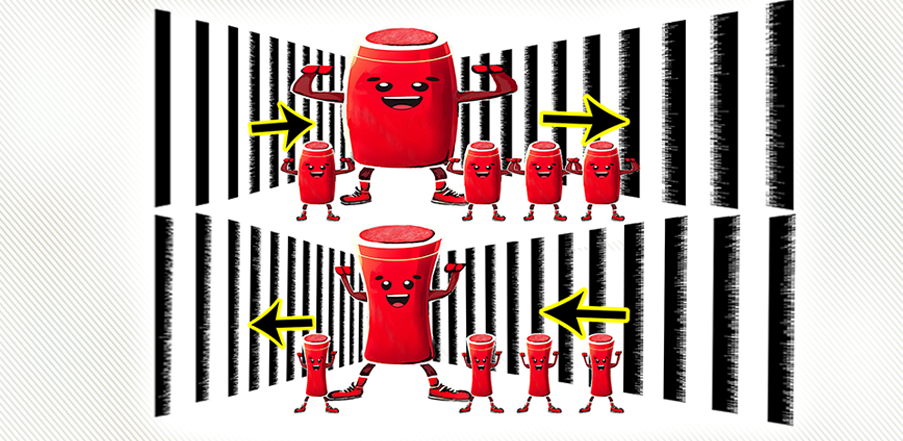 Future Northern Rivers Forum panel: Jane Laverty (left), Shelley Oldham, Max den Exter, Ben Roche, Pam Brook and Bernard Salt.
Future Northern Rivers Forum panel: Jane Laverty (left), Shelley Oldham, Max den Exter, Ben Roche, Pam Brook and Bernard Salt.
A leading demographer has called on the people of the Northern Rivers to be “outrageously ambitious” in crafting the region’s direction for the next half a century.
Bernard Salt’s bold ideas and vision for the region energised Northern Rivers’ influencers, business leaders and youth who gathered for the Future Northern Rivers Forum in the Enterprise Lab at Southern Cross University this week to re-imagine the next 30 to 50 years.
“I’d be outrageously ambitious for the future of the place I loved,” he said. “I’d set my sights high and seize the opportunity. There is nothing to lose.”
The two analogies Mr Salt used to encapsulate the Northern Rivers whetted the audience’s appetite.
“The region operates like the back of an old watch with cogs of different sizes working together to drive productivity, creativity and inclusivity.”
Mr Salt also likened the Northern Rivers region to Europe: “Comprised of states (towns) of roughly equal size and impact where no single place dominates. The municipalities of Tweed, Byron, Ballina, Lismore, Richmond Valley and Kyogle each have their own unique attributes that make up the business, social and cultural opportunities scattered across locations.”
Or, better yet, the Northern Rivers represents the emergence of a new type of city: “Three big towns (Tweed, Byron, Ballina) plus 41 smaller towns (suburbs) with a population of 250,000. Think of Los Angeles, which could fit comfortably into this area.
He affirmed what locals already know.
“The region is unique. Fertile, rich volcanic agricultural land, littered with cute lifestyle towns along the coast and in the hills. Farmers alongside sea changers, tree changers, professionals, workers, business owners and entrepreneurs. It’s positioned just close enough to access the culture of a big city like Brisbane but just beyond its orbit for people to be commuting. It’s a region unto itself.”
Mr Salt said the area’s population of 250,000 was the key.
“It’s one percent of Australia’s population. The Northern Rivers reflects Australia’s values and behaviour. Regional, provincial values are emerging as distrust of big institutions grows. People want communal, local, regional and familial. It must be real.
“Australia’s aspirational nature will get behind this region and its values so how can we cultivate that? What can 250,000 people do every day to create a better community?”
He recommended the region showcase the local people who chose to stay in the Northern Rivers, investing their 20s and 30s in this area as students, workers and community members, as a starting point to entice the region’s youth to stay.
Mr Salt encouraged investment in technical skills, knowledge workers and entrepreneurs.
“The future belongs to the skilled worker and an entrepreneurial outlook. Genuine innovation and creativity are critical.”
The necessary elements to craft the vision for 2030 and beyond
To drive this future vision of the Northern Rivers, Mr Salt said it was imperative the region – which is the 12th largest region in Australia – operate as a collective, a whole entity.
“It’s a bit like creating a new business. There needs to be an elected body or some kind of union of mayors who envision and agree upon a common future, inclusive of all voices. The people in charge will need to prosecute the case for the Northern Rivers.”
Mr Salt suggested the attributes and infrastructure of cities like Geelong or Hobart be emulated. His “success town” checklist is:
- (What we’ve already got): airport, university, local TV, local radio, daily newspaper, hospital, national event, private school, affordable housing, aged care facility, local entrepreneurs, united community, marginal seat, tourist attractions, vocational training, business awards, café culture, state/federal/local government.
- (Missing in the Northern Rivers): convention centre, military/CSIRO, sports stadium, national sporting team
“The Northern Rivers is already an inherently entrepreneurial community,” Mr Salt said. NSW’s top three most entrepreneurial areas are: Sydney’s Northern Beaches, then Southern Highlands/ Shoalhaven followed by Northern Rivers. The Northern Rivers’ most entrepreneurial towns are: Byron Bay, Ocean Shores, Mullumbimby, South Golden Beach and Lennox Head.
What did the Northern Rivers’ leaders have to say?
David Kirkpatrick, editor of the Northern Star newspaper which was behind the Future Northern Rivers Forum, listed several of his big ideas for the Northern Rivers: an integrated driverless public transport system; the region being known as a boutique food bowl; freight departing via Lismore airport to go overseas while Byron-Ballina airport is the region’s passenger terminal. Also for the Northern Rivers to become known as Australia’s culture capital as well as the nation’s farmer cooperative capital.
Professor Adam Shoemaker, Vice Chancellor of Southern Cross, said the University contributed around $9.8 million annually towards the community through the Health Clinic, gym and pool, Liverpool Football Centre, Library and Koala Care Centre.
He said the University was behind the Future Northern Rivers initiative.
“We want to continue to add value to the community. We want to add new ideas to change the region,” said Professor Shoemaker.
Danielle Mulholland, Kyogle Mayor and chair of the Northern Rivers Joint Organisation, endorsed the findings and future-thinking.
“It’s important to retain young people to study and work,” she said. “A thriving and healthy expansion is part of that.”
After the presentation, Mr Salt joined a panel discussion with NSW Business Chamber regional general manager Jane Laverty, Lismore City Council general manager Shelley Oldham, Brookfarm co-founder Pam Brook, Southern Cross University Vice President of Engagement Ben Roche and youth representative and Southern Cross engineering student Max den Exter.
Max den Exter grew up in Lismore and decided to stay locally to study.
“The reasons young people choose to stay are educational opportunities, social life, opportunity for part-time jobs and engagement opportunities,” he said. “The flow-on opportunities available to me studying at Southern Cross have been fantastic.”
Pam Brook and her husband Martin established Brookfarm around 20 years ago.
“I see the future of the Northern Rivers as an agriculture food bowl that’s sustainable, regenerative and clever,” Ms Brook said. “Barriers to business set-up need to be identified and solved.”
Ben Roche said world-class businesses and institutions already existed in the Northern Rivers.
“This vision is too big for local government alone to drive. It also needs influencers. The G21 Geelong Region Alliance is a good template.”
In wrapping up the Forum, the panel was asked to describe Future Northern Rivers in a few words.
- Vibrant, exciting: Shelley Oldham
- Where youth can stay and live: Max den Exter
- Enabling enterprise at all levels in new and different ways: Ben Roche
- Regenerative, collaborative, innovative: Pam Brook
- Back of an old watch, parts all working together, to drive productivity, creativity and inclusivity: Bernard Salt
Talking pictures
Four of the region’s emerging artists were commissioned to interpret the Future Northern Rivers Forum as it unfolded.
Sophia L Franks (@sophialfranks), Fabian Pertzel (@fabian_pretzel), Kairan Ward (@Kairan_w) and Eli Waters (@my_reign_art) are all studying art and design at Southern Cross University.
“We had such an amazing and productive day,” Fabian said on Instagram. “We had the opportunity to create artistic interpretations based on the presentations and discussions about the future of the Northern Rivers. It was impossible to interpret the full two hours of talks so I decided to focus on what resonated with me most as a young person in the Northern Rivers, that being the environmental and agricultural futures of the area. So excited for our work to be framed and gifted to each of the panellists who participated in the discussion.”








